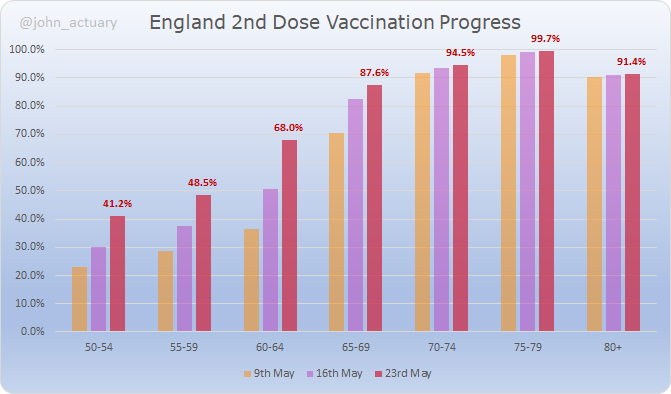England take-up data, now including 30-39. Data is to Sunday and based on ONS pop'n estimates (NIMS gives lower %s.)
50-54 has levelled off at just over 90%, and the 40s look as though they will at around 85%. We're now making good progress in the upper thirties too.
1/
50-54 has levelled off at just over 90%, and the 40s look as though they will at around 85%. We're now making good progress in the upper thirties too.
1/

Second dose progress is much more spread than we saw in Wales yesterday, with good gains this week across all of 50 to 65. This spread may now reflect some of the acceleration to 8 weeks over age 50, with the younger ages more likely to be brought forward.
2/
2/

2nd dose take up is now at 97% over age 70, around 92% at 65-69, and still making progress below that. It would be good to see all age groups get up beyond 95% given the lesser efficacy of one dose against B.1.617.2.
3/
3/

Finally how many 1st doses are still needed? It all depends on take-up at younger age groups. If we assume 75% then it's around 7.5m. That will take around 5 weeks at the current rate, say to the end of June.
But, it could be better than that...
4/
But, it could be better than that...
4/

In a couple of weeks the demand for 2nd doses will fall, as we track the fall in first doses in late March. The acceleration for those age 50 confuses the calculations a little, but I think we can expect much more to be available for 1st doses from mid-June.
5/
5/

So even if (as I hope), we get a higher take-up in the under 30s (80% would add around 1m to the total needed), then we should still be able to finish off first doses by the end of June, maybe a little earlier.
6/6
6/6
• • •
Missing some Tweet in this thread? You can try to
force a refresh












